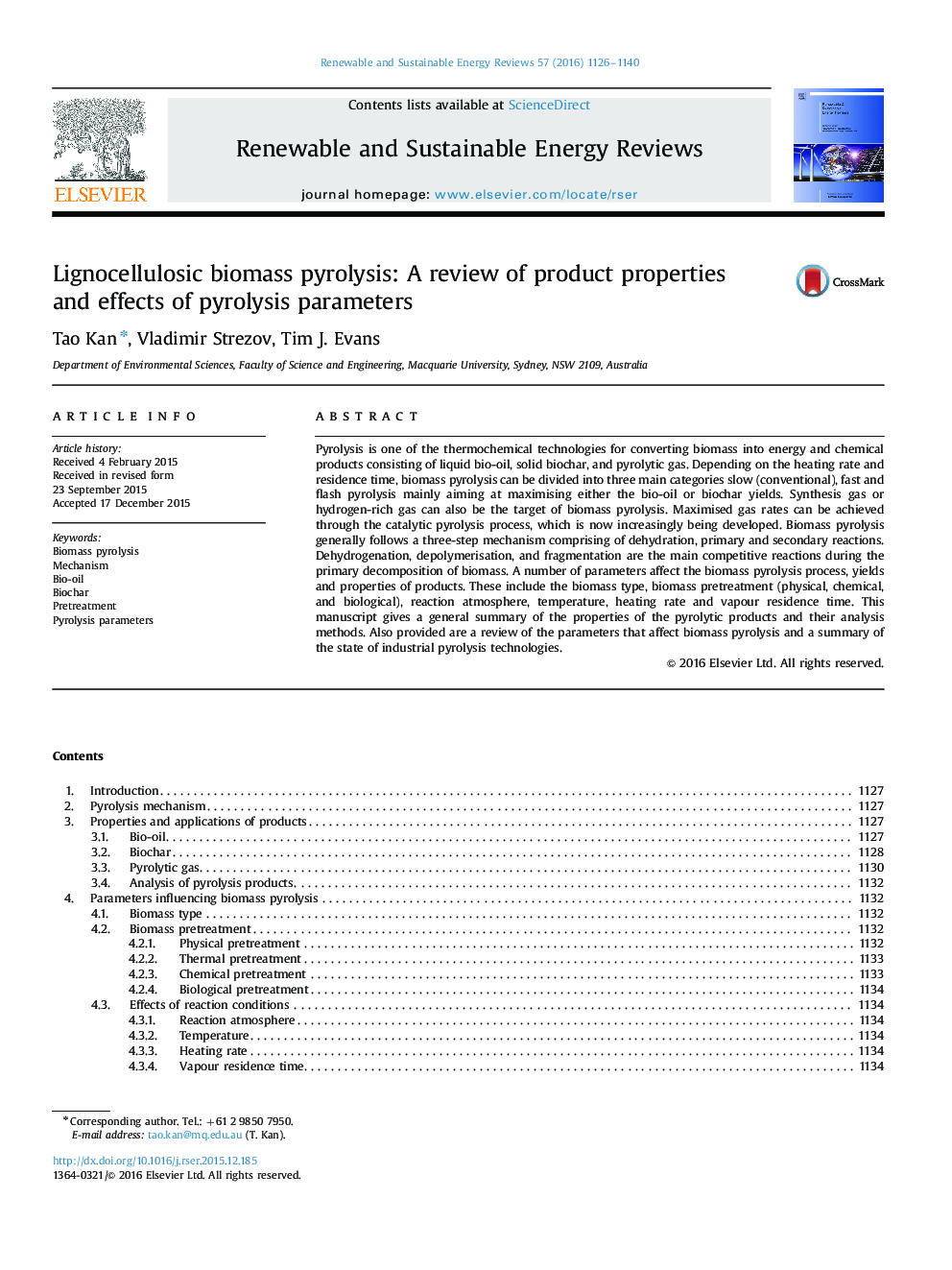| Article ID | Journal | Published Year | Pages | File Type |
|---|---|---|---|---|
| 8114912 | Renewable and Sustainable Energy Reviews | 2016 | 15 Pages |
Abstract
Pyrolysis is one of the thermochemical technologies for converting biomass into energy and chemical products consisting of liquid bio-oil, solid biochar, and pyrolytic gas. Depending on the heating rate and residence time, biomass pyrolysis can be divided into three main categories slow (conventional), fast and flash pyrolysis mainly aiming at maximising either the bio-oil or biochar yields. Synthesis gas or hydrogen-rich gas can also be the target of biomass pyrolysis. Maximised gas rates can be achieved through the catalytic pyrolysis process, which is now increasingly being developed. Biomass pyrolysis generally follows a three-step mechanism comprising of dehydration, primary and secondary reactions. Dehydrogenation, depolymerisation, and fragmentation are the main competitive reactions during the primary decomposition of biomass. A number of parameters affect the biomass pyrolysis process, yields and properties of products. These include the biomass type, biomass pretreatment (physical, chemical, and biological), reaction atmosphere, temperature, heating rate and vapour residence time. This manuscript gives a general summary of the properties of the pyrolytic products and their analysis methods. Also provided are a review of the parameters that affect biomass pyrolysis and a summary of the state of industrial pyrolysis technologies.
Related Topics
Physical Sciences and Engineering
Energy
Renewable Energy, Sustainability and the Environment
Authors
Tao Kan, Vladimir Strezov, Tim J. Evans,
